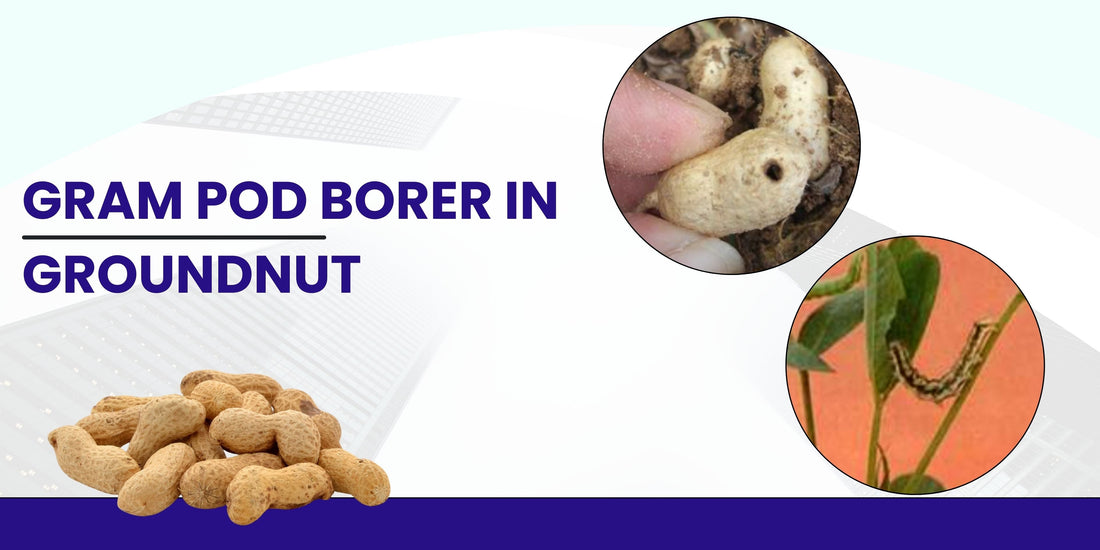
GRAM POD BORER IN GROUNDNUT
Telugu name: Shanaga pacha purugu
Scientific name: Helicoverpa armigera
Identification and life cycle:
- Adult is brown coloured moth with ‘V’ shaped speck on forewings and dull black border on the hind wing.
- Eggs are laid singly on host plant. The egg period is 5-7 days.
- Larva is greenish with dark brown to grey lines. Color varies with kind of host plant. The larval period is 14-20 days.
- It pupates in soil and pupal stage lasts for 10 days. Cannibalism is common among larvae.
SYMPTOMS
- Larvae feed on the foliage, prefers flowers and buds.
- Small or large irregular feeding holes on the leaves. or cuttings can be seen upon unfolding of leaflets.
- Larvae bore into young pods, feeding on the developing seeds.
FAVORABLE CONDITIONS
- Flowering and pod formation stages are susceptible.
- Dry spells after rain.
- Nearby host crops like pigeonpea or cotton.
Economic Threshold Level (ETL)
- 5 larvae per 10 plants.
MANAGEMENT
Cultural Control
- Follow summer ploughing to expose pupae to sunlight and bird.
- Crop rotation with sorghum, maize, pearl millet and sugarcane minimize the infestation.
- Install pheromone traps @ 5 /ac to monitor and kill the male moths.
- Set up light trap @ 1 / ha to attract and kill the moths.
Biological Control
- Spray HaNPV @ 100 LE/ac or B.t (Bacillus thuringiensis) @ 400 kg/ac to manage early instar larvae.
- Use Trichogramma chilonis @ 1 lakh/ha or Chrysoperla carnea @ 50000/ha at 40 and 50 days after sowing of groundnut can effectively check the pest.
Chemical Control
- For effective control of Caterpillar in groundnut bio pesticide like “LARVEX 250 ml / acre” can be used.
FAQ’s
1.What are the symptoms of gram pod borer?
Gram pod borer is a pest that damages groundnut crops by feeding on pods and seeds, reducing yield and quality. Early detection is crucial to minimize losses.
2.When is gram pod borer most likely to attack groundnuts?
The pest is most active during the flowering to pod development stage, especially in warm and humid conditions.
3.What preventive measures can I take against gram pod borer?
Rotate crops, avoid monocropping, and use pest-resistant groundnut varieties. Keep fields clean to reduce pest habitats.
4.What chemical control options are effective for gram pod borer?
Use recommended insecticides like Spinosad or Indoxacarb but follow label instructions to avoid harming beneficial insects. For effective control of Caterpillar in groundnut bio pesticide like “LARVEX 250 ml / acre” can be used.
5.How do I manage gram pod borer infestations sustainably?
Combine crop monitoring, biological controls, and targeted chemical use as part of an integrated pest management (IPM) plan.
